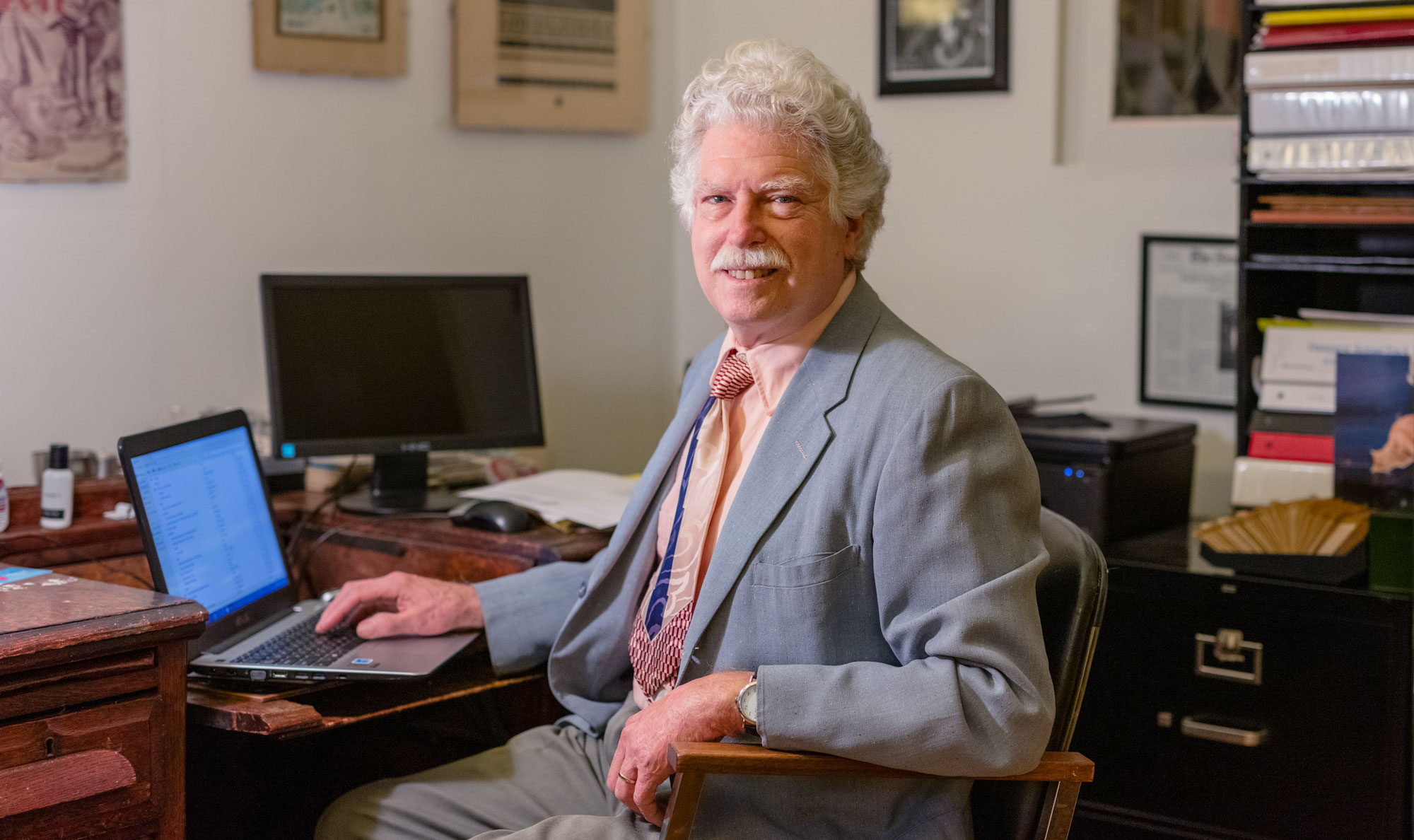
Hal Glatzer:
Author & Performer
Author
Hal Glatzer wrote his first piece of fiction in elementary school. He submitted The Mysterious Island to his third-grade teacher, who handed it back with this critique: “Great imagination. Terrible handwriting.” Perhaps that is what led, years later, to his embrace of computerized word processing!
Hal graduated from the Bronx High School of Science in 1962, and earned a BA in English from Syracuse University in 1967. He moved to Hawaii to teach high school, but became a newspaper reporter in 1970, and a television reporter four years later. He earned an MA in Communication from the University of Hawaii in 1979.
Hal had always been keen on science, and was drawn to the new technologies of personal computers and telecommunication. They quickly became his journalistic “beat.”
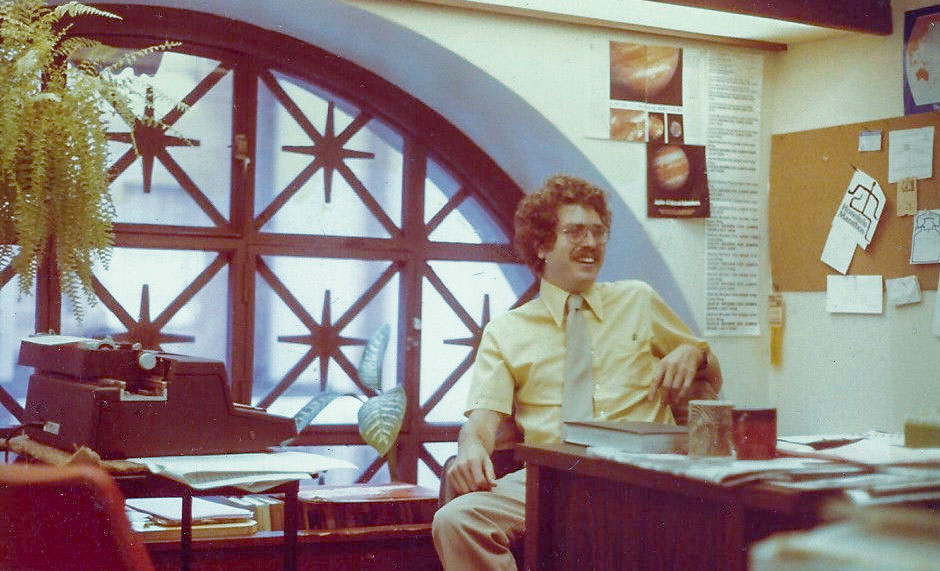
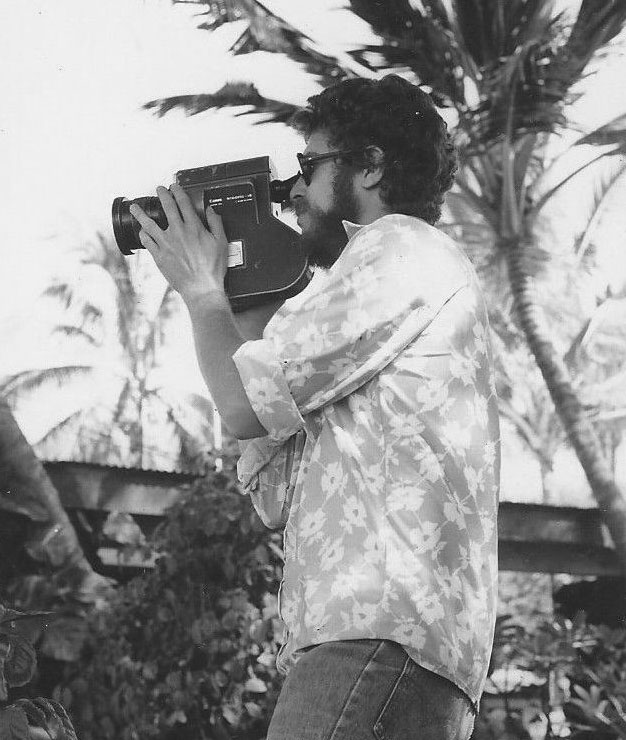
Moving back to the Mainland U.S. Hal spent the 1980s writing for or editing many of the startup high-tech magazines, and also authored several non-fiction books, starting with (what else?) Introduction to Word Processing.
He never gave up writing fiction, though. In the mid-’70s he had created a novel about corruption in Hawaii with an innovative format: the plot of Kamehameha County emerges from a file-folder of newspaper clippings, letters and telex dispatches. A decade later, while covering the computer industry full-time, Hal wrote a thriller set in the underworld of technology. Published in 1986 as a mass-market paperback. The Trapdoor centers on a hacker who gets in trouble with organized crime and online pornography, and has to hack his way out.
Hal has been musical all his life and while living in San Francisco, he became an officer of the Art Deco Society of California. The music and the aesthetics of the years between the World Wars inspired Hal to create a series of three mysteries – the heroine, Katy Green, is a working musician whose gigs plunge her into danger. At the same time, he began to wonder why so many cities that once had extensive networks of streetcar lines did not have any now. After doing researching for more than a decade, he wrote the historical novel Dead In His Tracks to show what happened to streetcars and why.
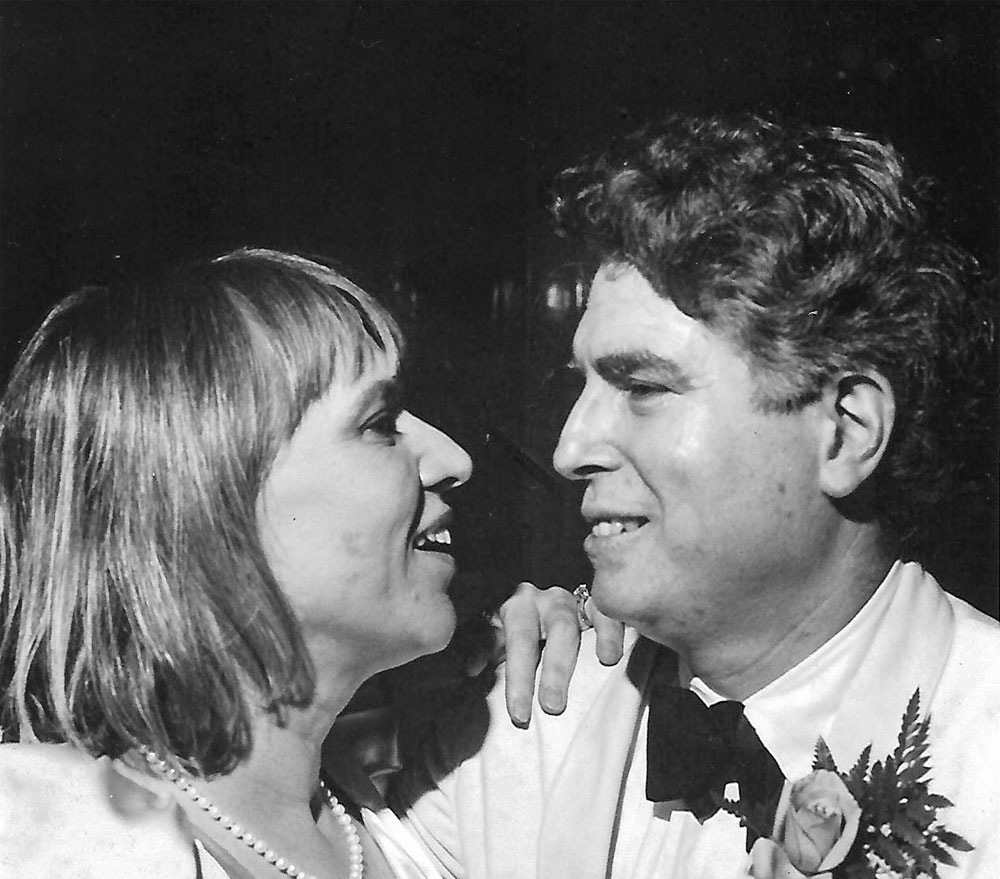
In 1992 Hal married Kathleen Frankovic, who was then the Director of Surveys at CBS News – the network’s chief public-opinion pollster. They lived first in New York, where CBS News is based; and once she was able to telecommute, they moved to San Francisco. In 2007, they moved to Hilo, Hawaii – near to where Hal had lived in the 1970s. In 2022, however, they returned to their apartment in midtown Manhattan, in the neighborhood long known as Hell’s Kitchen. Today, with Kathy consulting on public opinion research around the world, they are able to travel extensively, and spend more time in Europe.
Hal re-issued The Trapdoor in 2021, self-publishing it but changing only the cover art. He did not update the story, wanting to preserve the sense of what it was like to be tech-savvy in the ’80s, before the ubiquity of the internet, smartphones and streaming video.
A fan of Sherlock Holmes since he first read Conan Doyle's tales in elementary school, Hal has been a member of six “scion societies” of enthusiasts, and is active in two that are based in New York City. Besides essays and PowerPoint presentations about Holmes, he has written pastiche adventures in a stage play, two audio-plays, and five short stories that have been published in prestigious anthologies, and in his own anthology.
Hal is best-known for historical mysteries, but his latest novel, The Nest, is set in the present day, and puts an original spin on a classic mystery plot. Since 1986 Hal has been a Professional (now called Active) member of Mystery Writers of America, and currently serves as Vice President of MWA's New York chapter.
The Performer
Hal likes to say, “I was born and raised on a small island. Like many island musicians, I first got work in the classical European tradition. Later, I immersed myself in an American musical genre, but from another faraway culture. Eventually, though, I returned to my roots; and nowadays I take great delight in celebrating the music of my fellow islanders.”
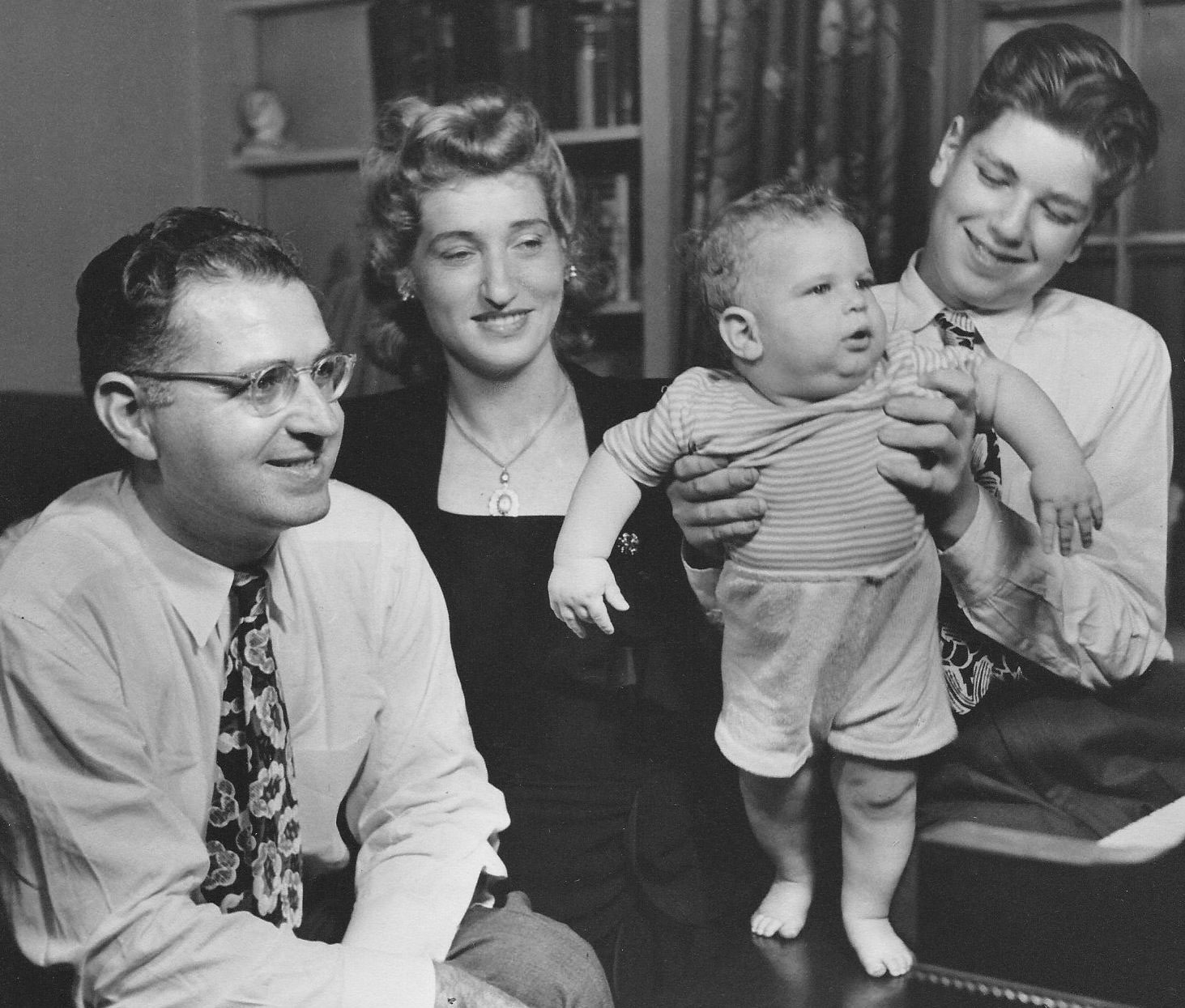
Huh? Hal explains: “I come from Manhattan. I grew up taking violin and clarinet lessons; and as a soprano, age 12-13, I sang in the Boys’ Chorus of the Metropolitan Opera Company. In my teens and twenties, I played 5-string banjo and sang in bluegrass bands. But for the past forty years, I have been playing vintage archtop guitars, and singing the early jazz and Swing-era “standards:” the repertoire of the “Great American Songbook,” created in the Manhattan realms of Tin Pan Alley and Broadway, much of which I first heard my mother sing at the piano.”
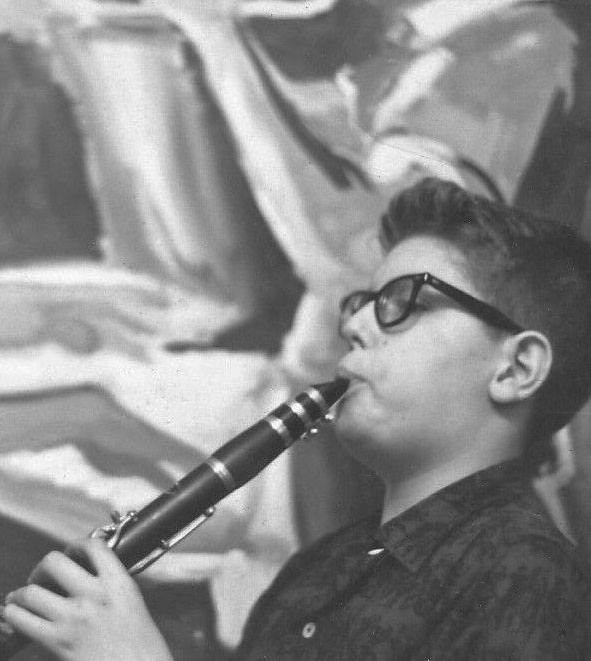

Hal’s three Katy Green mysteries are infused with music. His audio-play Too Dead to Swing is a mystery set in an all-female Swing band on tour in 1940, and features three pastiche songs of the pre-War era, which he also composed. He drew on his early classical-music training, and a stint as assistant librarian in a music college, to create A Fugue in Hell’s Kitchen – which was also released in audio as well as print. And his years in the Pacific gave him the background for setting The Last Full Measure in a dance-band on the S.S. Lurline, en route to Hawaii on the eve of Pearl Harbor.
Hal occasionally acted in community-theater productions in Hilo; in The Music Man, he was second-tenor in the barbershop quartet; and in The Sound of Music he portrayed Max, the impresario who puts the Trapp family on stage. But more often, Hal appears in public as himself, serving as M.C. for cabaret and variety shows at Hilo’s historic Palace Theater, and performing in bands playing vintage jazz and swing.
While in Hawaii, he was a member of the Tin Pan Alleycats, a five-piece dance-band with a repertoire drawn from the Great American Songbook. Before that, he was in Le Hot Club de Hilo, a “gypsy jazz” band honoring Django Reinhardt, in which he also sang French songs. Hal has gone four times to the annual Festival Django Reinhardt, in France, to meet and jam with European musicians, several of whom he has performed with in Gent, Lyon, and Amsterdam.
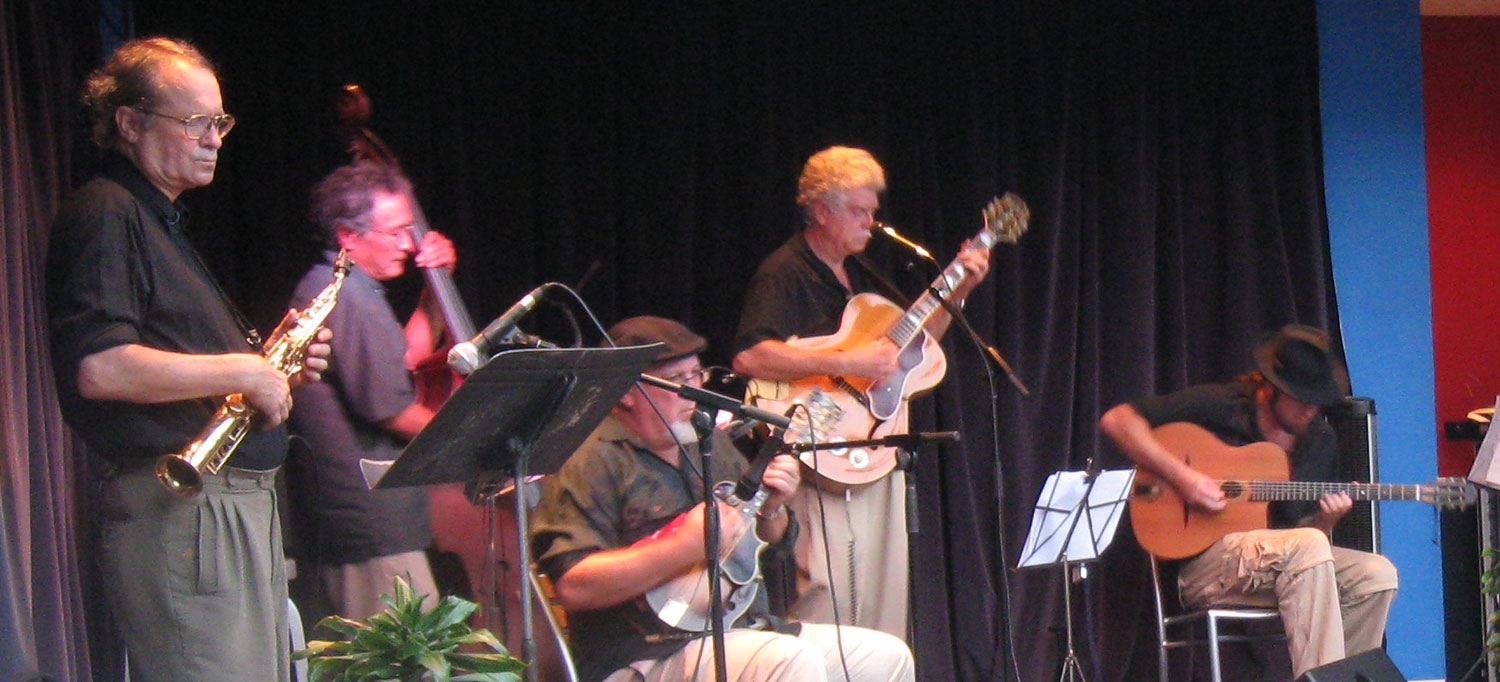
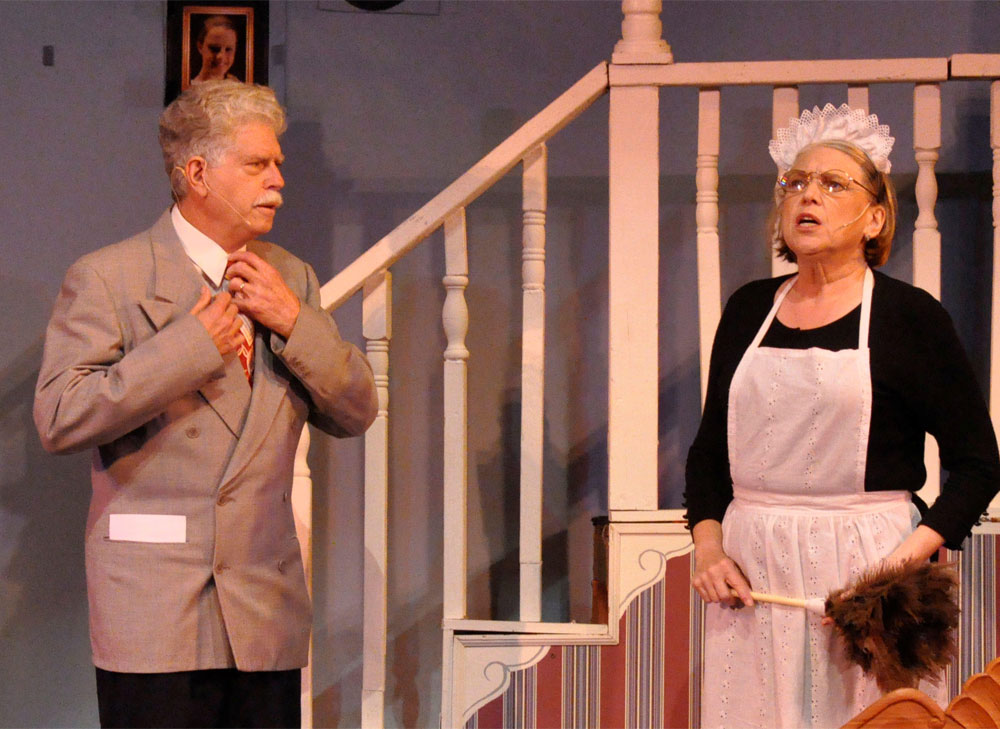
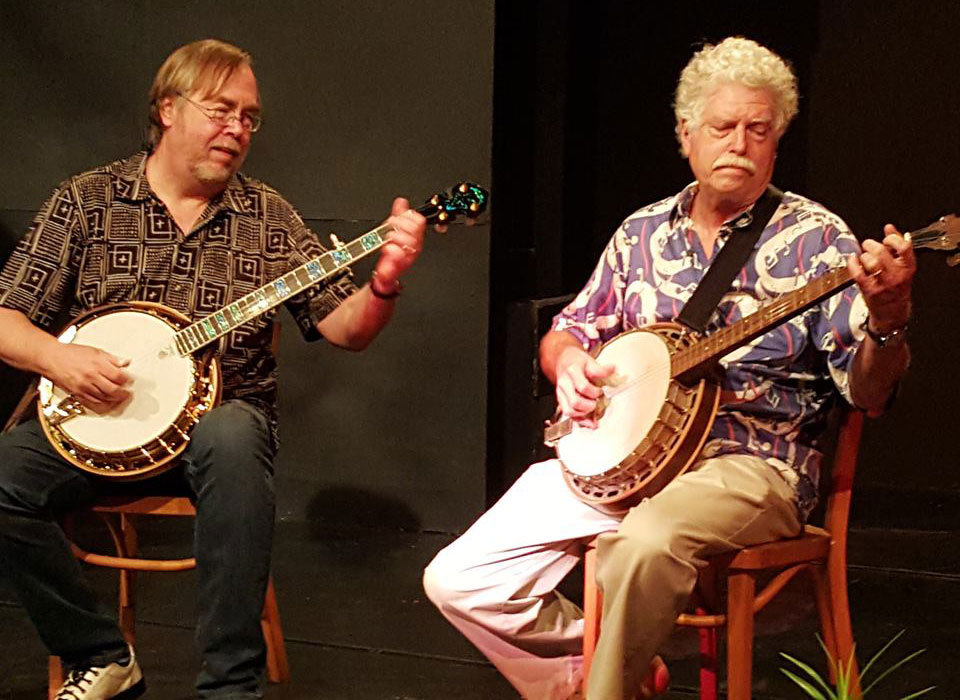
Since returning to live in New York, Hal has performed in solo gigs and with local vintage-jazz bands. And he still has a fondness for “busking” – playing for tips in public – which he has been doing since he was a teenager.